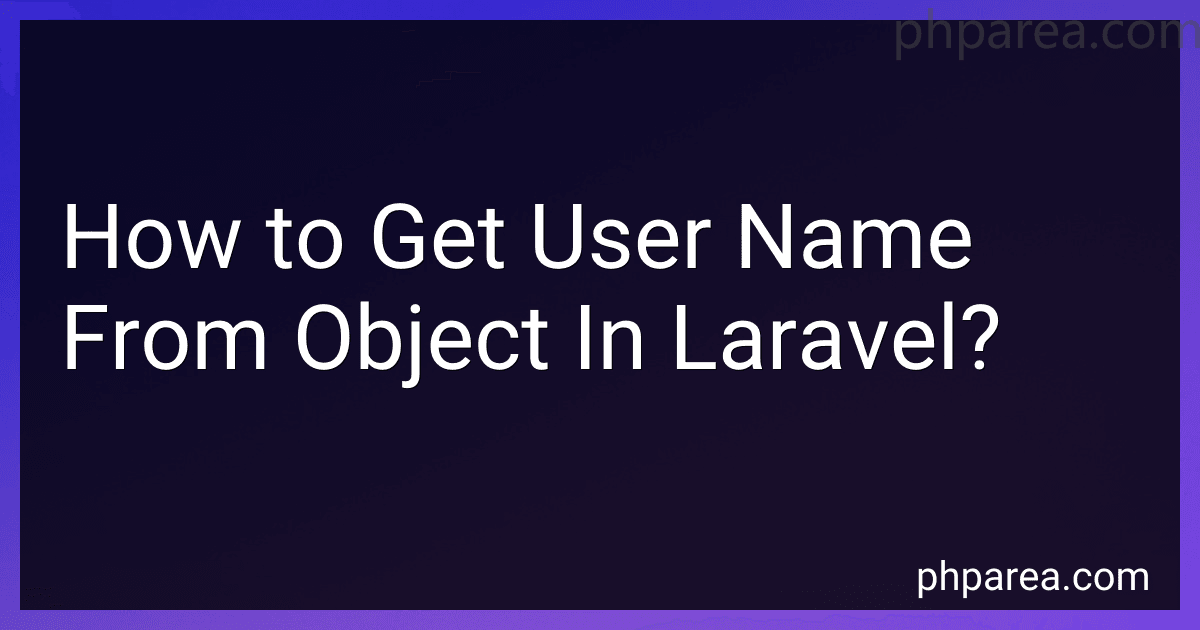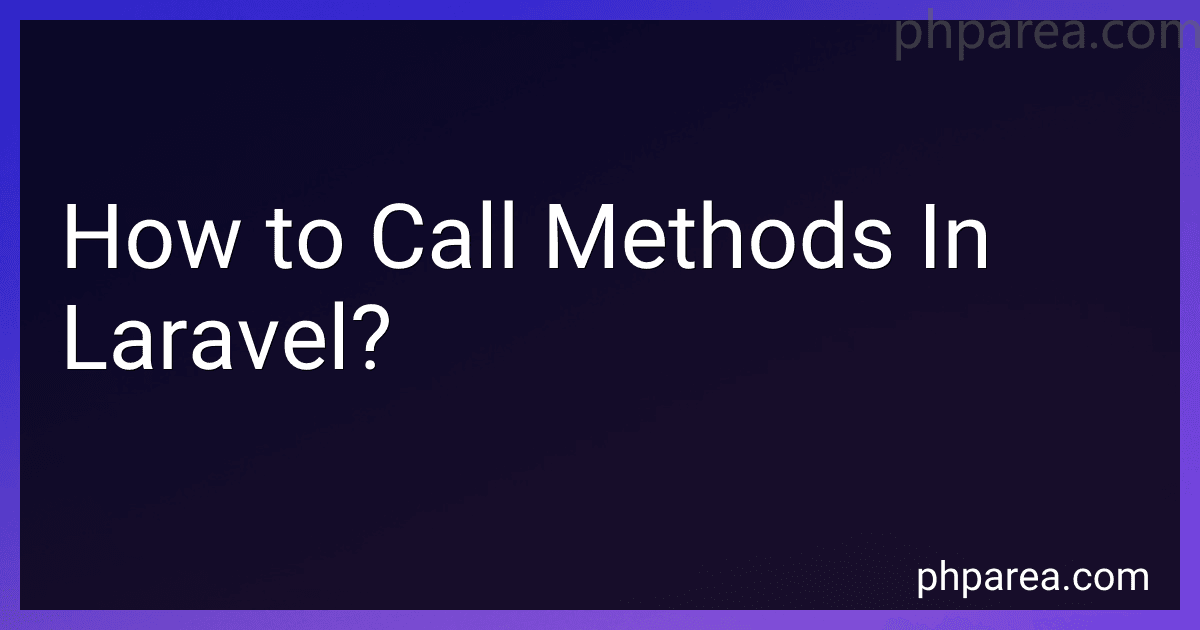PHP Blog
-
 6 min readTo fetch data from a JSON array in Laravel, you can use the built-in json_decode() function to convert the JSON string into an array. Then, you can access the data using array indexes or loop through the array to retrieve specific data. You can also use Laravel's Eloquent ORM to fetch data from a JSON column in a database table. Simply query the database using Eloquent methods and access the JSON data as you would with any other attribute.
6 min readTo fetch data from a JSON array in Laravel, you can use the built-in json_decode() function to convert the JSON string into an array. Then, you can access the data using array indexes or loop through the array to retrieve specific data. You can also use Laravel's Eloquent ORM to fetch data from a JSON column in a database table. Simply query the database using Eloquent methods and access the JSON data as you would with any other attribute.
-
 5 min readIn Laravel, you can use the groupBy method to group records based on a specific column, such as created_at.To group by created_at in Laravel, you can use the following code snippet: $data = Model::all()->groupBy(function($date) { return \Carbon\Carbon::parse($date->created_at)->format('Y-m-d'); }); This code snippet will group the records based on their created_at date. You can then loop through the grouped data to access the records for each specific date.
5 min readIn Laravel, you can use the groupBy method to group records based on a specific column, such as created_at.To group by created_at in Laravel, you can use the following code snippet: $data = Model::all()->groupBy(function($date) { return \Carbon\Carbon::parse($date->created_at)->format('Y-m-d'); }); This code snippet will group the records based on their created_at date. You can then loop through the grouped data to access the records for each specific date.
-
 6 min readTo export a PDF file in Laravel, you can use the barryvdh/laravel-dompdf package.First, you need to install the package by running the following command in your terminal:composer require barryvdh/laravel-dompdfNext, publish the package's config file by running the following command:php artisan vendor:publish --provider="Barryvdh\DomPDF\ServiceProvider"After that, you can create a new route in your web.
6 min readTo export a PDF file in Laravel, you can use the barryvdh/laravel-dompdf package.First, you need to install the package by running the following command in your terminal:composer require barryvdh/laravel-dompdfNext, publish the package's config file by running the following command:php artisan vendor:publish --provider="Barryvdh\DomPDF\ServiceProvider"After that, you can create a new route in your web.
-
 4 min readTo get the username from an object in Laravel, you can typically access it by using the arrow -> operator followed by the attribute name. For example, if you have an object called $user that represents a user, you can get the username by using $user->username. This assumes that the username attribute exists on the object you are working with. Remember to also make sure that the object is properly instantiated and that the attribute is accessible.
4 min readTo get the username from an object in Laravel, you can typically access it by using the arrow -> operator followed by the attribute name. For example, if you have an object called $user that represents a user, you can get the username by using $user->username. This assumes that the username attribute exists on the object you are working with. Remember to also make sure that the object is properly instantiated and that the attribute is accessible.
-
 5 min readTo create a directory in Ubuntu using Laravel, you can use the mkdir command in the terminal. First, navigate to the directory where you want to create the new directory. Then, run the following command: mkdir new_directory_name. This will create a new directory with the specified name in the current location. You can also create a directory using Laravel's File facade by calling the makeDirectory method with the path to the new directory as an argument.
5 min readTo create a directory in Ubuntu using Laravel, you can use the mkdir command in the terminal. First, navigate to the directory where you want to create the new directory. Then, run the following command: mkdir new_directory_name. This will create a new directory with the specified name in the current location. You can also create a directory using Laravel's File facade by calling the makeDirectory method with the path to the new directory as an argument.
-
 4 min readIn Laravel, you can ignore the "where" clause in a query if no specific query is provided by checking for the presence of the query before applying the "where" clause. You can use conditional statements to only apply the "where" clause if a query is provided, and otherwise run the query without any conditions. This way, you can dynamically adjust the query based on the presence of user input or other criteria.
4 min readIn Laravel, you can ignore the "where" clause in a query if no specific query is provided by checking for the presence of the query before applying the "where" clause. You can use conditional statements to only apply the "where" clause if a query is provided, and otherwise run the query without any conditions. This way, you can dynamically adjust the query based on the presence of user input or other criteria.
-
 4 min readIn Laravel, you can use the distinct method in a query for relations by chaining it onto the query builder instance. This method allows you to retrieve only unique results from a specific column in the related table.For example, if you have a User model with a posts relationship that belongs to the Post model, you can use the distinct method to retrieve only unique posts for a specific user.
4 min readIn Laravel, you can use the distinct method in a query for relations by chaining it onto the query builder instance. This method allows you to retrieve only unique results from a specific column in the related table.For example, if you have a User model with a posts relationship that belongs to the Post model, you can use the distinct method to retrieve only unique posts for a specific user.
-
 8 min readTo download a remote file in Laravel to the server, you can use the Laravel Filesystem features. First, you need to use the Storage facade to handle file operations. You can use the put method to download the remote file by providing the URL of the file as the first argument and the destination path on your server as the second argument. This method will download the file from the remote URL and save it to the specified path on your server.
8 min readTo download a remote file in Laravel to the server, you can use the Laravel Filesystem features. First, you need to use the Storage facade to handle file operations. You can use the put method to download the remote file by providing the URL of the file as the first argument and the destination path on your server as the second argument. This method will download the file from the remote URL and save it to the specified path on your server.
-
 4 min readTo get a JSON object in a Laravel controller, you can use the json() method provided by Laravel's response object. // In your controller method public function getJsonData() { $data = [ 'name' => 'John Doe', 'email' => 'johndoe@example.com' ]; return response()->json($data); } This method will automatically convert the array data into a JSON response that you can send back to the client.
4 min readTo get a JSON object in a Laravel controller, you can use the json() method provided by Laravel's response object. // In your controller method public function getJsonData() { $data = [ 'name' => 'John Doe', 'email' => 'johndoe@example.com' ]; return response()->json($data); } This method will automatically convert the array data into a JSON response that you can send back to the client.
-
 3 min readIn Laravel, you can access properties from an object using the arrow (->) operator. This operator is used to access a property or method of an object.For example, if you have an object called $user which has a property called name, you can access it like this:$user->name;This will return the value of the name property from the $user object.You can also access nested properties by chaining multiple arrow operators together.
3 min readIn Laravel, you can access properties from an object using the arrow (->) operator. This operator is used to access a property or method of an object.For example, if you have an object called $user which has a property called name, you can access it like this:$user->name;This will return the value of the name property from the $user object.You can also access nested properties by chaining multiple arrow operators together.
-
 3 min readIn Laravel, calling methods is quite straightforward. You can call methods on a Laravel object or instance by using the arrow (->) operator followed by the method name. For example, if you have a UserController class and you want to call the index method, you would do so by using $userController->index().Additionally, you can also call static methods in Laravel by using the double colon (::) syntax.
3 min readIn Laravel, calling methods is quite straightforward. You can call methods on a Laravel object or instance by using the arrow (->) operator followed by the method name. For example, if you have a UserController class and you want to call the index method, you would do so by using $userController->index().Additionally, you can also call static methods in Laravel by using the double colon (::) syntax.